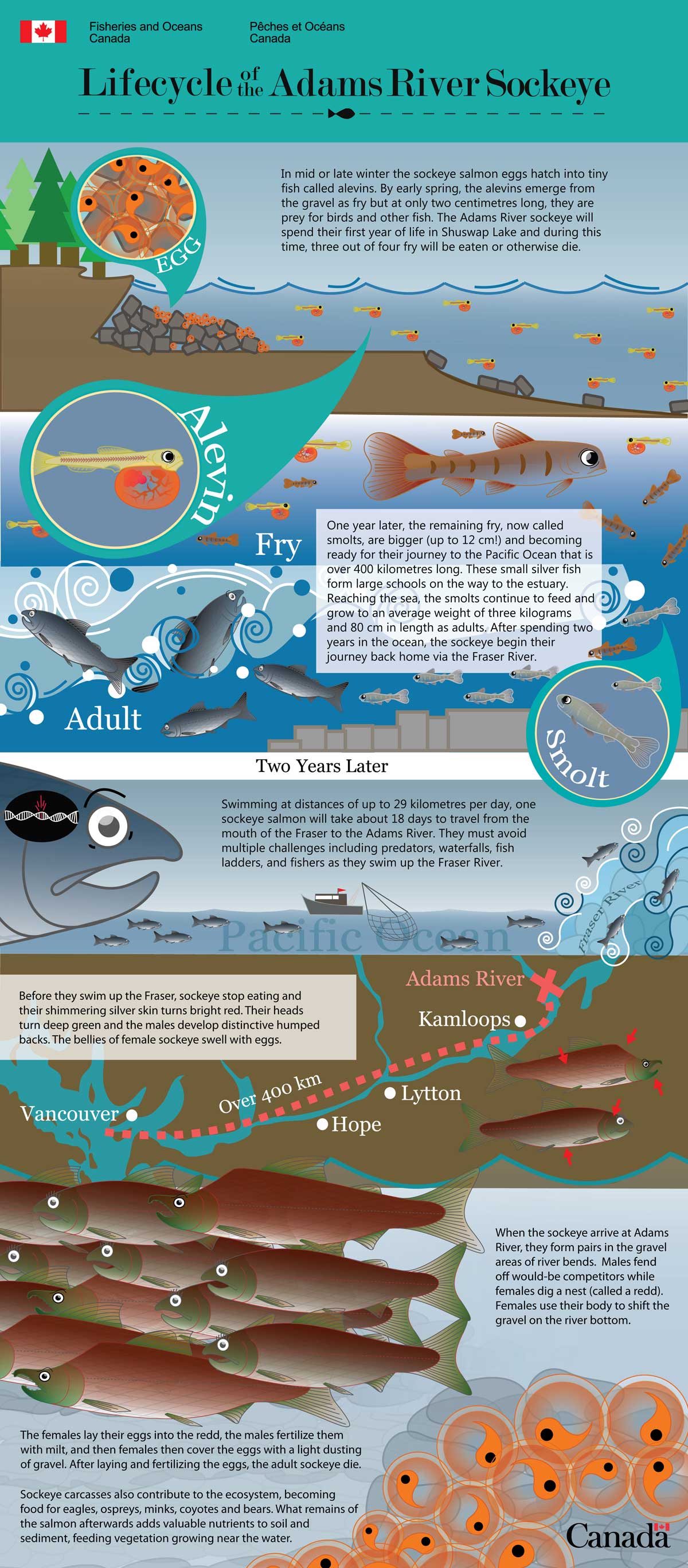Lifecycle of the Adams River Sockeye

Description: Lifecycle of the Adams River Sockeye
In mid or late winter the sockeye salmon eggs hatch into tiny fish called alevins. By early spring, the alevins emerge from the gravel as fry but at only two centimetres long, they are prey for birds and other fish. The Adams River sockeye salmon will spend their first year of life in Shuswap Lake and during this time, three out of four fry will be eaten or otherwise die.
One year later, the remaining fry, now called smolts, are bigger (up to 12 cm!) and becoming ready for their journey to the Pacific Ocean that is over 400 kilometres long. These small silver fish form large schools on the way to the estuary. Reaching the sea, the smolts continue to feed and grow to an average weight of three kilograms and 80 cm in length as adults. After spending two years in the ocean, the sockeye begin their journey back home via the Fraser River.
Two years later
Swimming at distances of up to 29 kilometres per day, one sockeye salmon will take about 18 days to travel from the mouth of the Fraser to the Adams River. They must avoid multiple challenges including predators, waterfalls, fish ladders, and fishers as they swim up the Fraser River.
Before they swim up the Fraser, sockeye stop eating and their shimmering silver skin turns bright red. Their heads turn deep green and the males develop distinctive humped backs. The bellies of female sockeye swell with eggs.
When the sockeye arrive at Adams River, they form pairs in the gravel areas of river bends. Males fend off would-be competitors while females dig a nest (called a redd). Females use their body to shift the gravel on the river bottom.
The femals lay their eggs into the redd, the males fertilize them with milt, and then females then cover the eggs with a light dusting of gravel. After laying and fertilizing the eggs, the adult sockeye die.
Sockeye carcasses also contribute to the ecosystem, becoming food for eagles, ospreys, minks, coyotes and bears. What remains of the salmon afterwards adds valuable nutrients to soil and sediment, feeding vegetation growing near the water.
- Date modified: